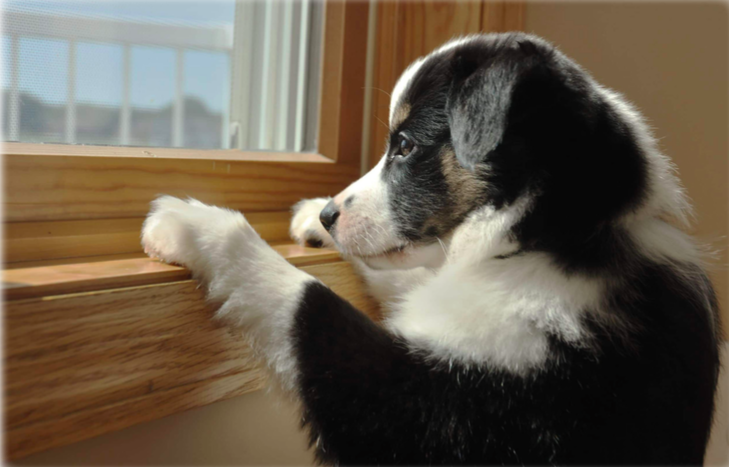By, Feldun Woelfen
It is good to have a dog that is close to you and a faithful companion. However, it can become a problem when the dog cannot stand to be apart from its owner. Some dogs experience varying degrees of behavioral changes when their owners are not around. Fortunately, this does not happen to many dogs. This article describes dog separa- tion anxiety causes, its symptoms and methods to cure the problem.
Reasons for Dog Separation Anxiety
There are many reasons why a dog has separation anxiety issues.
• Dogs are social animals and live in a pack. They con-
sider their owners as part of the pack; if not their pack leader. Hence, they would like to be with their owners all the time.
• The dogs have over bonded with their owners. They are too reliant and dependent on you for love and af- fection.
• Each time you go away, you tend to be away from home for some time. As a result, the dog gets anxious they feel you would be gone for a long time.
• The dog could have recently been separated from its mother or previous owner and has lost confidence.
Dog Separation Anxiety Symptoms
If your dog has one or more of the symptoms below, it might be experiencing dog separation anxiety syndrome.
• When it knows you are about to leave, it spins in circles.
• While you are leaving, it whines, cries and barks.
• After you leave, it destroys your property. Examples include tearing off things, scratching doors and windows. • When you are away, it becomes restless and tends to jump or bark at visitors.
• It eats less food while you are away especially if you are gone for days. • Dogs may even attempt to run from their house in search of you.
Dog Separation Anxiety Treatment
While there are medications to treat this syndrome, they do not address the root cause. There is no reason why dog separation anxiety syndrome cannot be cured without the need for medication. Try some of the methods below.
• Regularly bond with your dog by playing with it or taking it for a walk. It will tell your dog that they are important to you. Furthermore, after they
have spent their energy, they will want to rest alone.
• Give a place exclusively to your dog and let them know it is their spot. It needs to know it has a safe place in which it can relax when you are not
around.
• There is no need to make a fuss when you leave or when you return. We could unintentionally be stressing the dog or rewarding the dog when we
leave with this behavior.
• When your puppy cries when you put him in the crate, do not reward him by taking him out. Take him out when he is calm and quiet.
• Give the right amount of love and affection to your dog. Do not show too much love to your dog. Ignore it whenever possible but you need to oc-
casionally pay attention to it. You need to be careful not to over ignore it too as this will elevate its anxiety levels.
• Try being away from it for a short while and see how it reacts. If there are no major issues, gradually separate it longer.
• Initiate dog obedience training.
If all the above methods fail and the situation worsens , immediately send your dog for behavioral training.

